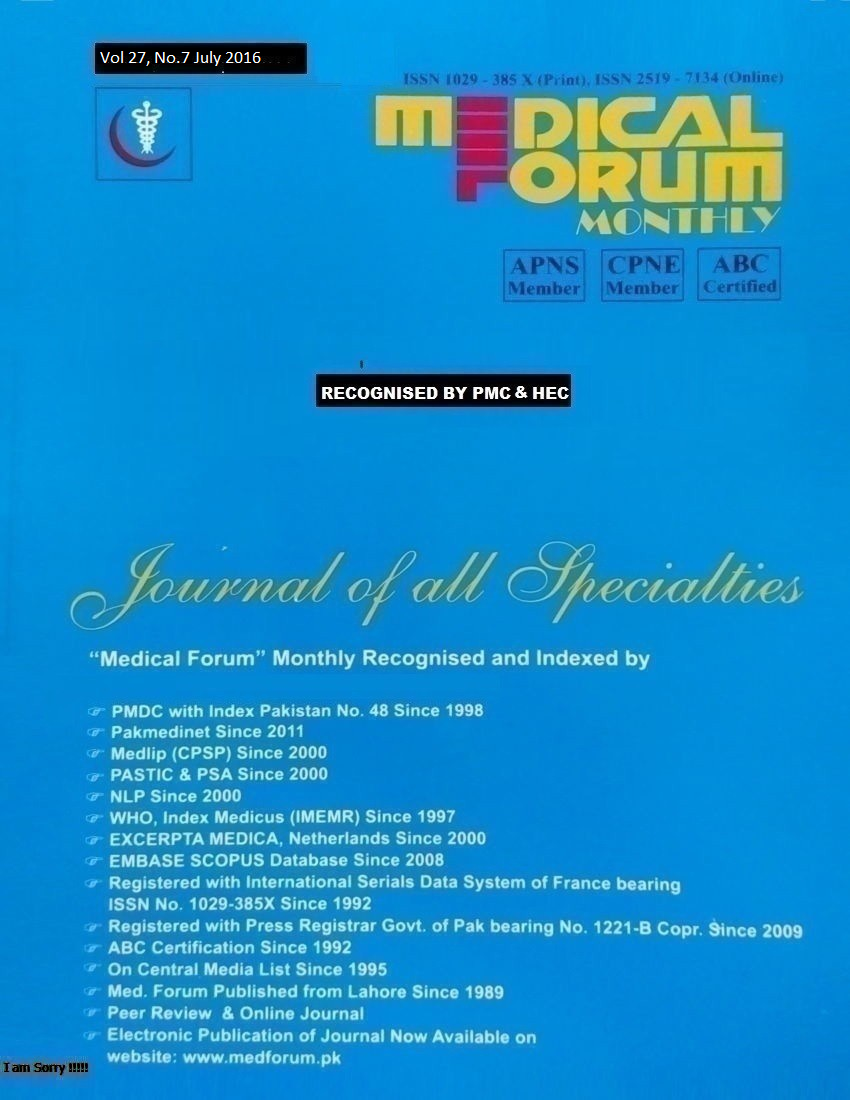
12. Diagnostic Yield of Conventional Trans-Bronchial Needle Aspiration (TBNA) for Subcarinal and Right Paratracheal Nodes
Muhammad Ashraf, Muhammad Hussain and Kamran Khalid Chima
ABSTRACT
Objective: to observe the diagnostic yield of conventional TBNA with EBUS-TBNA for right paratracheal and subcarinal nodes.
Study Design: Observational / descriptive study.
Place and Duration of study: This Study was conducted in Pulmonology Department of Services Institute of Medical Sciences (SIMS) Lahore from January 2013 to March 2015 after approval from ethical review committee. Materials and Methods: We prospectively enrolled patients with right Mediastinal and sub carinal lymph nodes for bronchoscopy and TBNA. Patients of both gender with significant (>1.5 cm) subcarinal and right paratracheal nodes or mass lesions were included in the study. All patients had conventional TBNA done with Smooth shot needle #19 F via video bronchoscope under light sedation. Adequacy of the sample and definitive diagnosis either by Histopathology or cytology was noted.
Results: Sixty patients including 27 male (45%) and 33 (55%) female had TBNA for Subcarinal or paratracheal nodes or mass lesions. Mean age was 50.31 + 14.3. Fifty four (90%) patients had the diagnosis on histopathology, cytology or tissue culture while 6 (10%) patients had non-diagnostic/inadequate sam les. Leading diagnosis was Sarcoidosis 24 (44.4%) followed by NSCCA 11(20.3%), Tuberculosis 10 (18.5%), SCCA 7 (12.9%), and Endocrine Tumor 2 (3.7%). Minor hemorrhage 6 (10 %) was managed by topical adrenaline.
Conclusion: Conventional TBNA is useful easily available, cheap and safe diagnostic tool in patients with Sub-carinal and right Para-tracheal lymph nodes/mass lesions of >1.5 m size.
Key Words: Bronchoscopy, TBNA=Trans-bronchial Needle Aspiration, EBUS-TBNA =Ultrasound guided Trans-bronchial Needle Aspiration.
Citation of article: Ashraf M, Hussain M, Chima KK. D agnostic Yield of Conventional Trans-Bronchial Needle Aspiration (TBNA) for Subcarinal and Right Paratracheal Nodes. Med Forum 2016;27(7):45-47.
